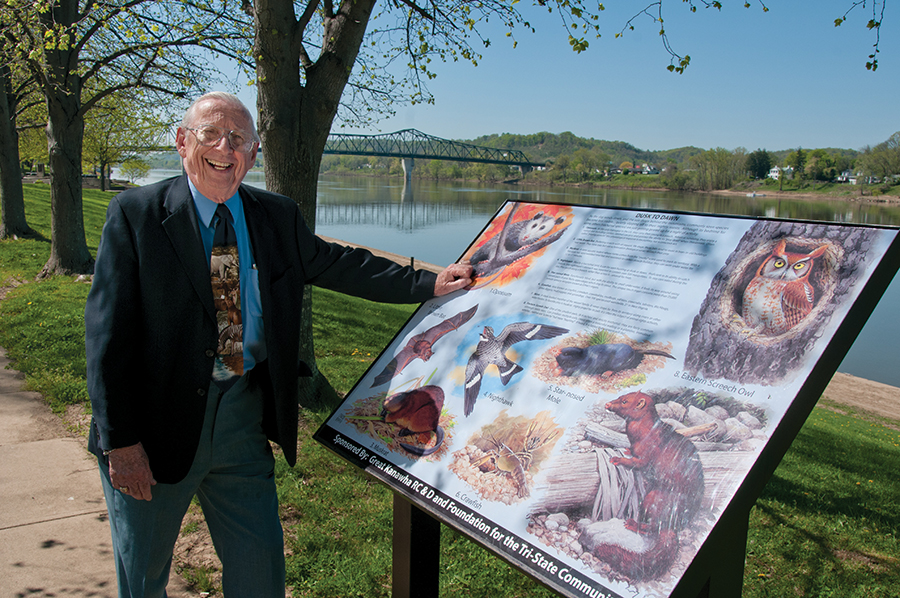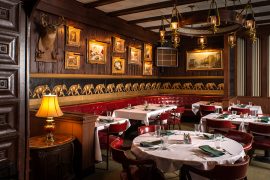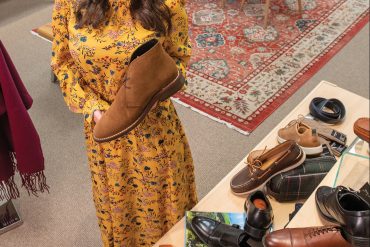Take a stroll down the Chuck Ripper Trail at Harris Riverfront Park to find beautiful paintings of the birds and wildlife in our area – and to find out why they’re worth protecting.
By Carter Taylor Seaton
HQ 78 | SUMMER 2012
Nationally known wildlife painter Chuck Ripper has had a highly successful 45-year commercial art career since moving to Huntington as a young man in 1953. However, despite his record of 81 U.S. Postal Service wildlife stamps, 575 conservation stamps for the National Wildlife Federation, 1,492 illustrations of flowers for the Field Guide to Pacific States Wildflowers, hundreds of magazine and catalog covers, 25 illustrated books and works in numerous galleries and museums, many area residents don’t know what the genial man with the easy laugh does for a living. With the completion of the Chuck Ripper Wildlife Interpretive Trail at Harris Riverfront Park, that should change.
Jim McClelland, former director of the Greater Huntington Park & Recreation District (GHPRD), knew of Ripper, however. McClelland was a graduate student at Indiana University when one of his professors, Ray Carlson, an avid outdoor educator, told his class of a highly regarded West Virginia wildlife artist named Chuck Ripper. After McClelland arrived in Huntington more than 30 years ago, he discovered Ripper lived here as well.
In 2008, when the park district signed an agreement to maintain Harris Riverfront Park and to host events there, McClelland wanted to create something innovative for the park since no new elements had been added to it for many years. He envisioned an interpretive walking trail as part of the Corps of Engineers master plan for the park. He wanted to make the riverfront more attractive, to include the trail in the Rahall Transportation Institute’s series of trails around Huntington and to use markers to interpret life along the Ohio River, which the park overlooks. His first choice to illustrate the markers was Chuck Ripper.
McClelland wanted the project to create partnerships with governmental agencies, organizations and local businesses.
“I thought it might be something affordable that we could get people excited about,” McClelland says.
So, he called Ripper.

“I told him, ‘We’d like this to be a shared project, using your knowledge and art to interpret aspects of river life,'” McClelland says. “We put our heads together and came up with an idea of what was to be interpreted, whether it was birds or wildlife connected with the river. I don’t know of any other place that has this.”
The project suited Ripper perfectly. As a child, he’d spent hours in the woods following his father, an amateur landscape artist. While his dad painted, Ripper turned over stones and chased butterflies. As an adult, he hunted, tracked, fished and hiked. When his interest in the outdoors meshed with a growing awareness of the importance of the ecology, his career as a wildlife artist flourished. With this current project, Ripper now shares his vast knowledge of the Ohio River, which he has visited regularly since moving two blocks away in 1959.
“I was tickled to do it, particularly since it was a subject I was fit to do,” Ripper says. “There’s nothing like being ready when the opportunity comes. This is huge as far as my work goes.”
However, with the opportunity came a responsibility, Ripper says, to educate the area on the wildlife at our parks.
“As far as I’m concerned, 90 percent of the population of the Ohio Valley is virtually illiterate when it comes to knowing about the ecology of the natural world of the river,” he laments. “They don’t think anything about it because they don’t know anything about it. But, you’ve got people up and down the Ohio Valley making decisions about what they dump in the river because it’s a free sewer going somewhere else, and they don’t realize what they are doing. If you could get 25 people to go to the river for a couple of hours a week and become familiar with what’s living there, they might look at it differently.”

Now, visitors will know what’s there. Eight permanent markers, each containing between eight and 15 Ripper renditions of creatures living along the Ohio River, span a half-mile stretch of Harris Riverfront Park. Some greet visitors at 10th and 12th streets. Others are part of the panoramic view of the river or are nestled among the shade trees lining the path. U.S. Corps of Engineers landscape architect Dan Bock directed the placement of each sign so visitors would be able to view all of them easily. While about half the project’s funding came from a Department of the Interior Land and Water Conservation grant, as McClelland hoped, garden clubs, individuals, businesses, the City of Huntington and the Greater Huntington Park & Recreation District also helped sponsor the signs. Dedicated in May 2010 and completed in 2011, the trail is part of the new Paul Ambrose Trail for Health (P.A.T.H.) as well.
According to Ripper, the list of possible subjects was a mile long, but he chose the birds, creatures, flowers, fish and butterflies most common to the region. Once he determined what to depict, he created the original acrylic paintings on gesso-covered boards, which now hang in the offices of the GHPRD. After Ripper and Bock fine-tuned the text for each placard, Reece Booth photographed the paintings and Paris Signs fabricated the finished products.
According to Kevin Brady, current executive director of the GHPRD, the trail is already a great success.
“I have heard comments from many people, young and old alike, all very impressed with the beautiful artwork and great entertainment and educational value of the Chuck Ripper Trail,” he says. “We are proud to have the trail artwork in Harris Riverfront Park and encourage residents and visitors to come enjoy the nature of the Ohio River as portrayed by such an amazing artist as Chuck Ripper.”




